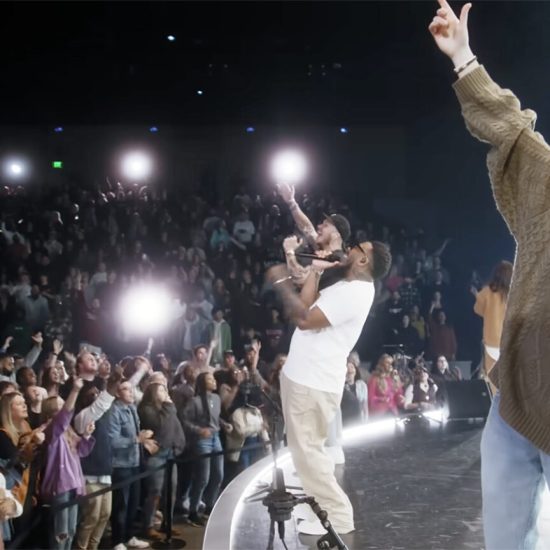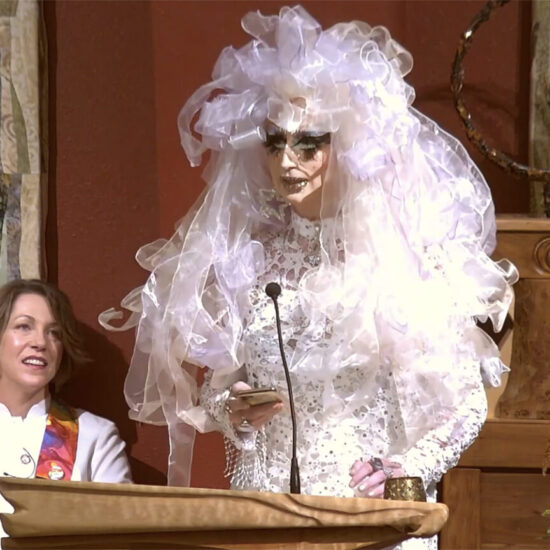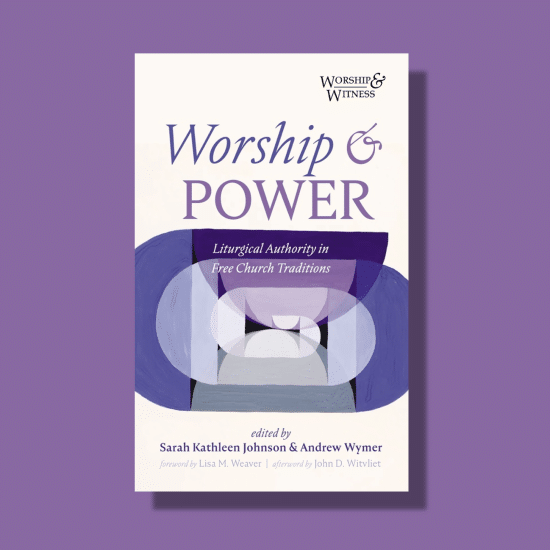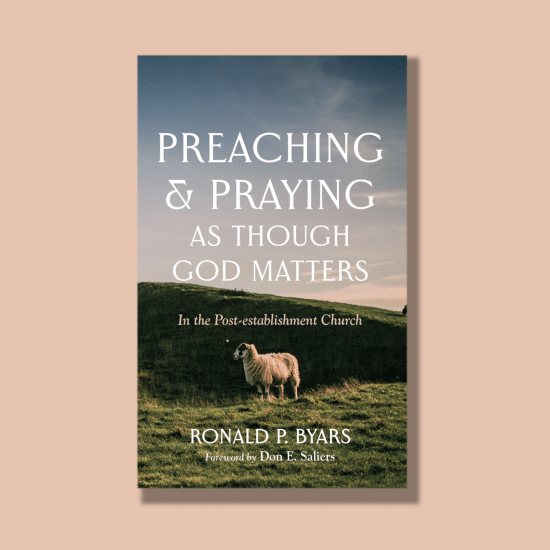The church has used the arts — all forms — to share the story of God’s love and mercy throughout the ages. Poets and authors have written volumes. Painters and sculptors have depicted Bible stories and represented the earthly and risen Christ. Musicians have threaded notes to reflect the beauty and the darkness of the gospel.

St. Louis-based painter Bert VanderMark finds inspiration for art in the Bible. (Bert VanderMark painting)
|
Believers today still use the transcendence of creative expression in worship. While music often has been at the forefront, styles and forms change — from classical to alternative rock.
The visual arts also have ebbed and flowed in the worship scene — and seem to be garnering increasing attention in some congregations. “The arts are like in its baby steps right now…as a preaching/proclamation tool,” St. Louis-based painter and graphic artist Bert VanderMark believes.
A Christian since 1988, VanderMark didn’t think much about his work as a reflection of his faith until about 10 years later when he asked God to reveal his purpose for VanderMark’s life.
He turned to Bible stories for inspiration. While working on the first drawing, one depicting Jonah, he became frustrated. “I was getting ready to tear it up. But as I turned it upside down to rip it and realized I was looking down a whale’s throat,… I came to realize we run away from God’s purpose and God eventually confronts us…. That’s what he did with me,” VanderMark explained.
He said God led him to do an intensive Bible study in which he spent almost three years in understanding how the Bible described God in visual terms.
Now he ministers to individuals through painting and leads churches to understand how the visual arts enhance worship and how to use them effectively.
“I’ve discovered there is a movement within the church inspired by the Holy Spirit,” he said.
Much of his current church consulting and conference work has been among Baptists. “”They [Baptists] had been the most hesitant but now are the most receptive,” he said.
At the conclusion of a recent workshop for the Illinois Baptist State Association on incorporating arts in worship and outreach, a participant remarked, “You just changed our perception.”
Some Baptist churches, including two in Missouri, have already discovered the joy of artistic expression as worship.
Liturgical art has been a driving force in Ed Rollins’ ministry at First Baptist Church in Columbia, Mo., where he has been associate pastor of music and administration since 1988. He started introducing various art forms into worship several years ago and led the congregation to use the arts as a means to minister to the city.
Rollins started with bulletin covers. Then, he decided to use fabric pieces behind the choir loft and hang a created flame. “We’ve done lots with fabrics and banners,” he said.
For Lent a few years ago, he covered the altar area with burlap, broken pots and a bare tree to help visualize the attitude of repentance the 40 days before Easter represents.
Earlier, Rollins attended a workshop at Montreat Conference Center, the Presbyterian retreat facility in North Carolina. The worship altar had been decorated with live plants and water.
The Columbia minister decided to set up something similar, but he had been toying with the idea of creating art during the service. He culminated the Lent observance of brokenness by enlisting 20 members to remove the pottery and tree, and then set up the water and plants within two minutes.
“We transformed it before their eyes and the altar became so different,” he said.
A door opened to ministry to the University of Missouri and to the community because of the acoustical quality of First Baptist’s sanctuary.
When members learned the facilities at the MU School of Fine Arts are “horrible” and that the University Singers “were going all over the place” to find better venues, the congregation “told them they were always welcome” to use First Baptist, Rollins said.
Other MU music groups began using First Baptist as Rollins’ wife, Deb, worked on a doctorate in music. Then Rollins helped start a concert series in Columbia and serves on its board. He founded a community handbell group 25 years ago.
The church also hosts the first day of the Missouri Symphony Society Ploughman Competition each year.
“We have a beautiful facility. Why not share it?” Being open to the community is “priceless” for God’s kingdom and the church, he said.
Kirkwood Baptist Church in Kirkwood, Mo., also draws from the arts as a means to enhance worship experiences. Although the congregation has used music and art throughout the years, leaders expanded use of artworks and skill during Lent in 2013 and at Epiphany this year.
Kirkwood Pastor Scott Stearman asked eight church members to create eight pieces of art to represent each station of the cross mentioned in the gospels. “This went so well that I had the idea…to build Epiphany around the art and faith theme,” he said.
Each Sunday from Jan. 12 through Feb. 16, an artist shared his or her faith, discussed the form of artistic expression and emphasized the relationship between faith and art. Participants included Stearman’s wife, Cecelia, with opera; Rosalie Berkley, poetry; Denise Williams, fabric mosaics; Phil Sneed, songwriting; Doug Gavin, sculpture; and Bill and Becky Ray, music history and performance that featured Appalachian music. All are church members.
The series also included Marianist Bro. Brian Zampier, who had been an apprentice to the late famous Roman Catholic artist, Bro. Mel Meyer. Zampier did a presentation on sketchbook journaling.
Kirkwood Baptist plans to expand its use of art, particularly in its community prayer garden. Leaders of both churches see the arts as a means to enhance worship and to help people build deeper relationships with God.
“We don’t all learn…grow in the same way. For some, they need to see it [the gospel]…. Some need to hear it…. It is a means to share Christ in another way that will enhance” each part of worship, Rollins said.






